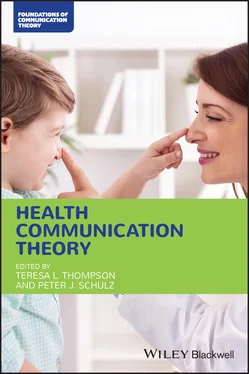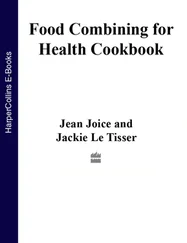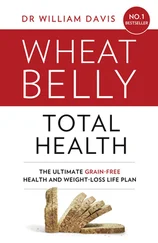Storytelling in healthcare reflects the narrative impulse and is a powerful form of experiencing and expressing suffering, loss, and healing (Sharf 1990; Sharf et al. 2011; Vanderford, Jenks, and Sharf 1997). Indeed, healthcare would be impossible if not for the capacities of participants (i.e. patients and providers) to order and represent experience in narrative form (Harter 2013). These clinical encounters involve both patient and provider in the creation and negotiation of a plot structure within clinical time, which Mattingly (1994) termed therapeutic emplotment . Patients story pared‐down autobiographical accounts of illness that reveal lay beliefs about cause and effect, while healthcare providers rely on narrative activity to gather information, keep records, make therapeutic decisions, build relationships with patients, and respond to their concerns in the contexts of their unfolding lives.
The narrative medicine movement signifies growing acknowledgment that clinical judgment is an interpretive act of coupling narrative logics with the scientific reasoning of biomedicine (Harter 2013; Sharf et al. 2011). Widely recognized as the authority in the practice of narrative medicine, Dr. Rita Charon (2006, 2009) – who is both a general internist (with an MD from Harvard University) and a literary scholar (with a PhD from Columbia University) – claims that narrative sensibilities humanize healthcare by enabling providers to join with patients who are suffering and to be responsive to their plight. Narrative medicine (see also Chapter 6) calls for providers to study literary texts to deepen their abilities – what Charon (2006) deems narrative competence – to absorb, interpret, and respond to the stories of others. Because narrative provides an important “road toward empathy and reflection” (Charon 2006, p. 131) by orienting individuals aesthetically and imaginatively to the way they live, literary ways of thinking can help providers adopt contradictory points of view, embrace the metaphorical as well as the factual, and be moved by what they hear (Charon 2006).
Physicians who practice narrative medicine make sense of their patients’ experiences through a mutual dialogue of storytelling and story‐listening. First, they attend to what their patients are saying and how they are saying it; then, they represent what they have witnessed by creating something new, by writing their experiences to perceive and display their thoughts, feelings, and perceptions of the situation (Charon 2006). From this perspective, narratives invite providers to stretch their imaginations to empathically grasp events befalling their patients: “The boldness of the imagination is the courage to relinquish one’s own coherent experience of the world for another’s unplumbed, potentially volatile viewpoint” (Charon 2006, p. 122). Ultimately, narrative medicine is a relational accomplishment: providers must be attentive without becoming overwhelmed, and patients must be willing and empowered to story their experiences (Harter 2013).
Autoethnography has become increasingly popular in the social sciences, especially in health‐related research (Chang 2016). By definition, autoethnography “operates as a bridge, connecting autobiography and ethnography in order to study the intersection of self and others, self and culture” (Ellingson and Ellis 2008, p. 446). Autoethnographers incorporate the “I” into research but analyze the self as if an “other” (Ellingson and Ellis 2008, p. 448), describing and systematically analyzing their personal experiences to understand cultural, social, and political meanings. Autoethnographic research is socially just and often critically reflective of taken‐for‐granted aspects of the social world (Ellis et al. 2011). Indeed, autoethnographers “seek the good” for society and themselves, sharing “the hope (and determination) that the moral, political, and practical work of autoethnography can give meaning to our lives and the lives of other people touched by this work” (Bochner and Ellis 2016a, p. 213).
As with other approaches described in this chapter, autoethnography intertwines theory and method from a social constructionist perspective, rendering it both process and product. Forms of autoethnography differ in a variety of ways, including how much emphasis is placed on the study of others and on the researcher’s self in interaction with others (Ellis et al. 2011). Indeed, scholars view autoethnography as a “broad and wonderfully ambiguous category that encompasses a wide array of practices” (Ellingson and Ellis 2008, pp. 449–450) – with analysis and representation once again falling across a continuum. Still, autoethnographers have begun to recently distinguish their work as either evocative or analytic (Anderson 2006), with the former focused on narrative presentations that evoke emotions and inspire conversations (i.e. storyteller) and the latter concerned with developing theoretical explanations of broader social phenomena (i.e. story‐analyst; Bochner and Ellis 2016b; Ellingson and Ellis 2008). Although autoethnographies often incorporate elements of both at varying points on a paradigmatic continuum (Allen‐Collinson 2013; Wall 2016), I present them here as dichotomous to better explain how theorizing is understood and engaged in each. In doing so, I recognize that I have inserted scholarly examples somewhat artificially, based on my own subjective understandings rather than the authors’ implicit intentions.
Evocative Autoethnography
Communication scholars Carolyn Ellis and Art Bochner are widely recognized for conceptualizing, curating, and promoting autoethnography, in general, and evocative autoethnography , in particular. To them, autoethnographies are personal “stories with raw and naked emotion that investigate life’s messiness, including twists of fates and chance” (Bochner and Ellis 2016b, p. 10). Researchers craft these intimate, vulnerable stories with evocation as a goal, wanting to move audiences “to care, to feel, to empathize, and to do something, to act” (Ellis and Bochner 2006, p. 433). From this perspective, stories can and do theorize (Ellis and Bochner 2006). Rather than privileging analysis over story (i.e. treating stories as data to be analyzed), scholars instead write or perform stories that frame their lived experiences in hindsight and invite others into conversation about what those experiences mean for themselves and others (Bochner and Ellis 2016b). In other words, evocative autoethnographers place themselves and their experiences under a “narrative analytic microscope,” thereby applying the same theoretical scrutiny to themselves that they readily apply to the lives of others (Goodall 2004, p. 189).
To that end, evocative autoethnography embodies emotionality and subjectivity, blurs the boundaries between the social sciences and humanities, and claims conventions of literary writing (i.e. dialogue, scenes, unfolding action, characterization) in first‐person accounts of lived experiences. As Bochner and Ellis (2016b) explain in their writings and yearly workshops:
We encouraged researchers to think of themselves as writers and to tell stories the way novelists do; we promoted emotional, vulnerable, and heartful writing; we discouraged jargon and celebrated erotic and close to the bone prose in which knowledge is delivered through emotional arousal, identification, and self‐examination rather than abstraction and explanation. “Let the story do the work,” we insisted. “Be evocative. Make your readers feel stuff; activate their subjectivity; compel them to respond viscerally.” What mattered most to us was intimate detail, not abstracted facts.
Читать дальше












